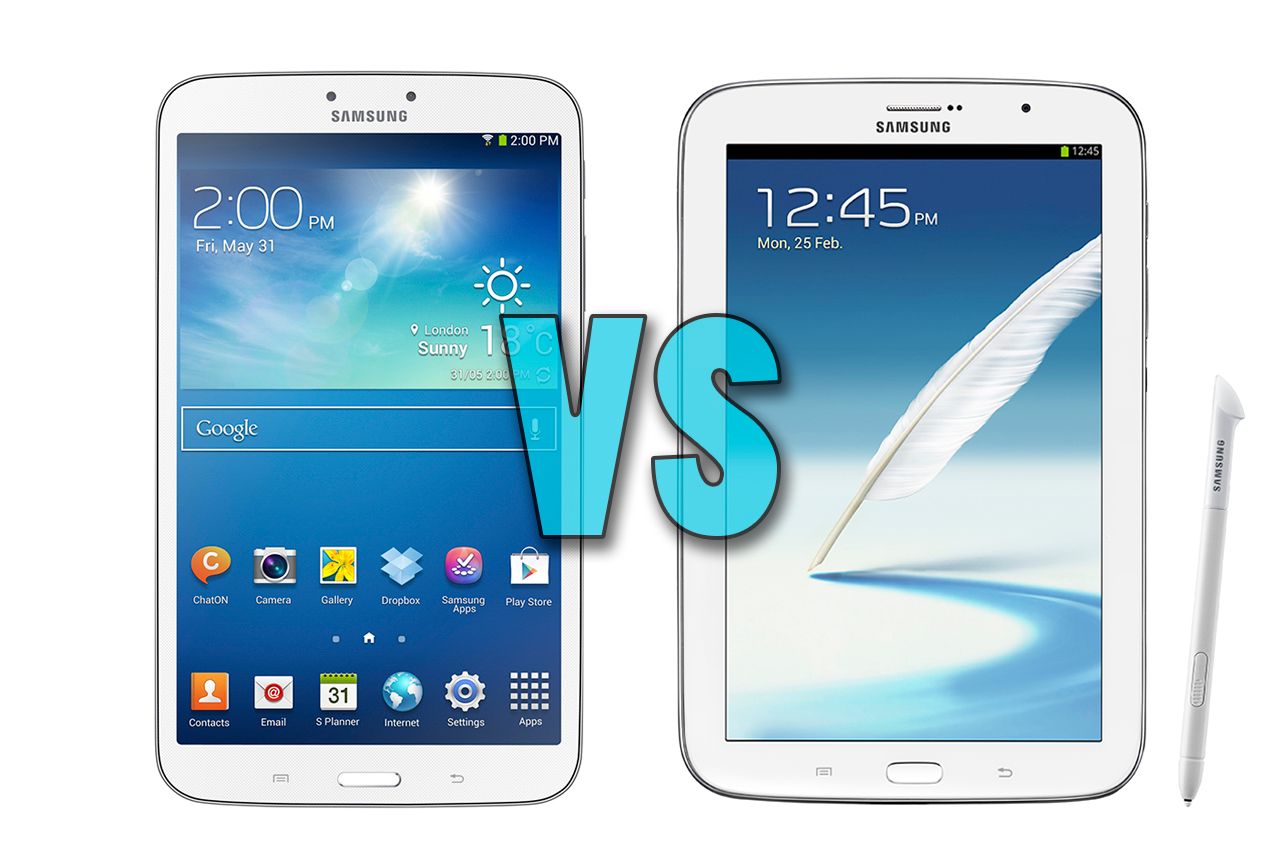Samsung has just updated its value-for-money range of tablets, launching the Samsung Galaxy Tab 3 in both 8.0 and 10.1-inch sizes. Added to the 7-inch version previously announced, the new slate comes in three different form factors, all with virtually identical specifications, so there's something for everyone.
But this is not the only tablet range in Samsung's line-up. The Galaxy Tab 3 is now brushing shoulders with Samsung’s other current flagship tablet series, which comprises the Galaxy Note 8.0 and Galaxy Note 10.1. So which is the Samsung slate to go for?
Processor and memory
The Galaxy Tab 3 uses a 1.5 GHz dual-core chip, with a 1.6GHz unit sitting in the top of the line 10.1-inch model. This lags behind the Note 10.1’s which uses a 1.4GHz quad-core ARM A9 processor.
Those extra cores should up things a fair bit in the speed stakes, although a more recent version of Android on the Galaxy Tab 3 might make things feel slicker in real world terms. We will talk more about the operating system later.
It's worth mentioning that the Galaxy Tab 3 8-inch uses 1.5GB of RAM, while the rest of the range uses 1GB. The Note has 2GB of RAM.
Screen
In display terms, the Galaxy Tab 3 has a 1280 x 800 resolution screen. This display resolution stays the same across all three devices from the 7-inch to the 10.1-inch version. Of course, that means the pixels per inch drops as screens get bigger on the Galaxy Tab 3.
The Galaxy Note 10.1 uses a 10.1-inch screen (no surprises there), with exactly the same display resolution. While we are yet to compare both screens directly, we imagine they will perform almost identically. The Galaxy Note 8.0 too. They are all TFT in preference to the company's Super AMOLED displays used on many of its smartphones.
Stylus (S Pen)
The most obvious difference between the Galaxy Tab 3 and Galaxy Note tablets is that the latter come with the S Pen stylus and numerous dedicated applications. If you're an artist or like to write freehand or sketch, then it's a no-brainer in this department.
Operating system
Android 4.2 Jelly Bean ships on the Galaxy Tab 3, which is better than the Galaxy Note 10.1 or Galaxy Note 8.0 - the latter is pre-installed with Android 4.1.
However, the Note family has recently been updated to support Jelly Bean, so real-world performance between the two might actually be slightly quicker with the newer version of the Note, particularly when you factor in the number of processor cores. Also, there are additional features on the Note series that make use of the stylus, such as the tablet switching on when you remove the S Pen.
Storage
Every version of the Tab 3 will ship in both 16GB and 32GB form. Every version is also expandable via microSD. The Note 10.1 claims a victory here simply because it also ships in 64GB form and also has a microSD slot. This means, in pure memory stakes, that the Note 10.1 could theoretically offer more storage space.
The Galaxy Note 8.0 is maxed at 32GB with microSD card slot like the Tab 3.
Battery
Battery life gets bigger throughout the Galaxy Tab 3 range. Things start at 4,000 mAh with the 7-inch version and then hop up to 4,450 with the 8-inch. The top of the line 10-inch Tab 3 comes with 6,800 mAh.
Compare this directly with the Note 10.1 and the Galaxy Tab 3 is only just defeated. Samsung’s current tablet flagship features a 7,000 mAh battery. Whether this will mean better battery life in reality remains to be seen, as the extra pair of processor cores will no doubt use more battery life on the Note 10.1.
The Note 8.0 has a 4,600mAh battery, just a fraction more that the similarly sized Tab 3 equivalent. Again, the extra processor cores may be decisive.
Camera
This is one of the most significant differences between the Note seris and Galaxy Tab 3. The entire Tab 3 range uses a rear mounted 3-megapixel offering with a 1.3-megapixel camera on the front.
The Note 10.1 and 8.0 up the ante to 5-megapixels on the rear and 1.9 on the front for the 10.1, 1.3-megapixels on the Note 8.0. This should mean better video call quality, which is important to tablets. The rear camera should also be a touch sharper, although not significantly so.
Connectivity
Things are neck and neck in the connectivity department between the two tablet ranges. If you opt for a Note, then you have LTE support on a variant of the 10.1-inch version. Go for a Tab 3 and you have the choice of LTE and 3G also.
The only difference is that the Note 10.1 is also available in Wi-Fi only form, whereas the Tab 3 comes with LTE as standard.
Price
Samsung is yet to confirm the pricing of the Tab 3, but the Tab 2 10.1 in Wi-Fi and 3G form costs around £360, so this should give you an idea. The Note 10.1 costs £429 for the 3G version.
While we don’t have anything concrete, we expect the new Tab to undercut the Note 10.1 in cost. For the money, you will be getting the same screen, LTE and 16GB of internal memory. If it’s cheaper, as we expect, holding out for Q3 and the Tab 3’s launch might be a good idea. Although the S Pen stylus may offer you the experience you're looking for. The Galaxy Tab 3 has no such input mechanism.

